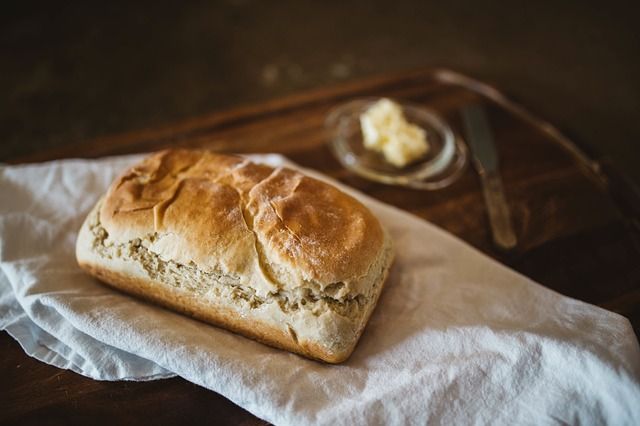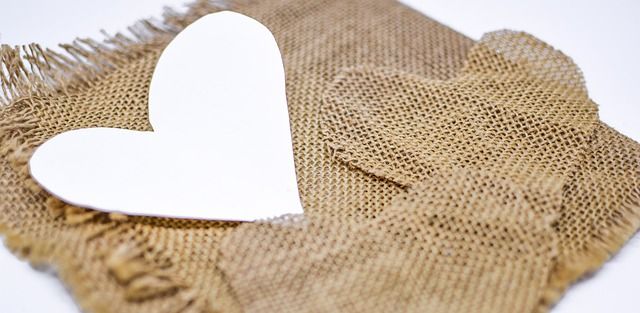The Eco-friendly fabrics you can use if you are concerned about the environmental impact of different textiles include Recycled fabrics, Organic cotton, Hemp, Bamboo, Ramie, Organic jute, Tencel, Organic linen, Organic silk, Recyclable PET fabric, PLA fabric, Modal, Organic wool, and some sustainable fabrics.
I have two daughters and I want the earth intact when they grow up. And I don’t think that is too much to ask for! But it is easy to be just concerned and not do anything. I do this almost every day.
There are many things that I can do towards eco-friendly living today starting with cashless payments, reading news online, refusing to eat in anything plastic etc.
Another biggie conservation step is to start buying clothes made of earth-friendly fabric. Your next generation deserves to live their lives safely on this earth, and anything small you do counts.

What is the need for earth-friendly fabric?
Textile manufacturing processes have an often untold negative ecological impact on the earth’s environment. This encompasses all the processes from obtaining the raw materials, pre-treatment (washing, bleaching etc.), dyeing and printing, finishes applied, storage, labeling of the final product and packaging.
All these processes involve various chemicals and toxins that cause a lot of environmental problems.
It has been proved beyond doubt that the waste products from the manufacturing process of all types of fabrics are doing enormous damage to the ecosystem of our planet.
In the ocean, the wastewater from these factories which carry small plastic particles is killing all marine life slowly but surely.
Insecticides and fertilizers used in growing plant fibers, fabric finishes used on clothes including poisonous formaldehyde, dyes that color fabric, bleach used in the production, all result in pollution of soil and water resources.
The top pesticides used in textile fiber manufacturing are known to be cancer-causing. When synthetic fabrics degrade in the soil they release very harmful chemicals.
Some of the textiles can cause severe allergies in humans and cause irritation of the skin. This may prove detrimental to the health of babies and the elderly. Asthma, birth results, developmental disorders and even childhood cancer are linked to chemical use
Related post in this site : Chemicals in textiles; Reference : Hazardous chemicals in clothing.
What are organic textiles ?
Organic textiles are certified textiles made from fibers that are grown in controlled and constantly monitored conditions where no chemicals like fertilizers and pesticides are used and soil and water where the plants are grown are constantly checked for deviation.
Organic farming processes are strictly adhered to in making these fabrics. The fabrics are processed using organic compounds, which are not harmful to the environment.
In the testing process for certification of these fibers, traces of heavy metals, additives etc are checked.The fabric should have at least 95% of organic fibers to be certified organic.
GOTS (Global Organic Textile Standard) is a standard for textiles to define an organically grown crop and an organic and non-toxic manufacturing process including social responsibility (fair labor) standards.
What are eco-friendly textiles?
Eco-friendly textiles are naturally organic without any monitoring or controlled conditions. These fibers are grown in places where you do not need to use fertilizers or pesticides.
They are biodegradable and produce very little negative impact on the earth’s environment when the fibers are made into fabric through equally earth-friendly processes.
Eco-friendly fabrics are renewable ie they are capable of being replenished or replaced by natural processes at a rate comparable or faster than its rate of consumption
The earth-friendly fabrics should adhere to the following criteria
- There are low levels of pesticide residue present in the fabric
- Formaldehyde and heavy metal concentration does not exceed a certain percentage
- PH value is neutral or slightly acid
- No carcinogenic dyeing materials are used.
Here is a list of the best earth-friendly textiles (organic and eco-friendly) – next time you are in a fabric showroom ask for these if you want to do your bit
1. Hemp
Hemp is a bast fiber and it is counted as a very sustainable fiber. When the plant (from which this fiber is derived), is growing there is no need for any pesticide or fertilizer.
It grows without the need for fertilizers and naturally distracts pests. It even releases nutrients into the soil – howz that! It has the least impact on the ecology for a number of reasons like this.
The production process of hemp fibers and the textile manufacturing process are all relatively safer and have very little negative impact on the environment.
2. Eco friendly /Organic cotton
Cotton production is touted as one of the most polluting processes in manufacturing. As cotton is the world’s most commonly used natural fiber (It is estimated that about 60% of world’s total clothing is made of cotton), this results in a lot of ecological damage.
When we rely on organic processes in growing and textile manufacturing processes, the quality of cotton substantially increases.
Organic cotton, thus naturally grown and made into fibers and then into the fabric is hypoallergenic. No fear of rashes caused by pollutant residue on the fabric
Muslin or Calico is unbleached cotton and you can call it eco-friendly as it does not undergo the finishes that cotton fabric normally goes through
Related posts : Organic cotton; Names of cotton cloths ; Sewing cotton.; How is cotton made
3. Bamboo
Bamboo fabric is a naturally eco-friendly fabric made from the pulp of a bamboo tree. The bamboo tree does not need any pesticide or fertilizer to grow – it is that proliferate in the places where they grow.
It can be made into yarn without using any chemicals. The fiber is biodegradable, renewable and easy to maintain ( no need of drycleaning).
The making of the final product may involve some chemical processes. Environmentalists point out to the dumping of the toxic waste as a negative of this fabric – but compared to regular cotton bamboo is “eco-friendlier”
Related post: Bamboo fabric.
4. Ramie
Ramie is a plant fiber and produces a fabric that is very sustainable. The plant can be harvested about 6 times a year and grows without the aid of fertilizers or other chemicals.

5. Organic jute
Jute is a coarse, brown fiber from the stalk of the bast plant, grown in India. The fabric made from this fiber is sturdy, biodegradable and recyclable. When it is made using organic processes, there is no more eco-friendly textile than this
Read more on Jute fabric here.
6. Tencel
Tencel is the brand name (Lenzing Fibers) for lyocell, made with wood pulp cellulose from the eucalyptus tree.
The production of Tencel is very eco-friendly as it uses very little water as compared to production of other plant fibers ( Wastage of good water resources is one big ecological concern all over the world). It is fully biodegradable and hypoallergenic.
7. Organic Linen
Organic linen is made from naturally, organically grown flax fibers. Organic linen is renewable and biodegradable.
Linen as such is eco-friendly as it does not need much chemicals to grow but you cannot call it 100% environment-friendly as it takes a lot of chemical processes to convert flax fibers to linen fabric. This is where Organic linen trumps.
Related post: How is linen made.
8. Organic silk
This refers to beautiful silk fabric made in the most organic way possible – no pesticides, insecticides or harsh chemicals used in the production of the silk fiber and the fabric manufacturing process is also as organic as possible. The result is a very soft and beautiful silk
9. Recyclable PET fabric
In this, yarns are made from recycled plastic bottles (used) or rejected bottles acquired from bottle companies. This reduces waste and produces less pollution. Other names for this fabric are Recycled polyester Fabric & PET Spun Fabric
At the end of a fabric’s life, Recyclable Polyester can be recovered and recycled to create new raw material for future products.
10. Polylactic Acid Fabric (PLA fabric)
PLA is a stretch fiber, made from the polylactic acid extracted from genetically altered corn. It is a biodegradable and bioactive thermoplastic aliphatic polyester derived from renewable resources, such as corn starch (in the United States and Canada), cassava roots, chips or starch (mostly in Asia), or sugarcane (from Wikipedia).
The PLA fiber is converted to PLA fabric. It is biodegradable and renewable. The fabric has properties of polyester and nylon
11. Sustainable fabrics
This refers to fabrics made of fibers which are not depleted or permanently damaged when the fiber is made and renews itself with harvest cycles of five years or less. Egs. are alpaca, mohair, wool, cork.
Already mentioned fibers like hemp bamboo, cotton, linen are also sustainable fibers
12. Modal
Modal is a rayon type textile made from reconstituted cellulose from beech trees.
The beech tree can grow without any extra irrigation or fertilizer or pesticide application; to top it, the beech tree serves as a soil enhancer. The fabric made from it is biodegradable and renewable.
13. Organic Wool
Wool refers to the soft curly hair of sheep and other animals like alpaca, camel, cashmere goat. It is a renewable fiber and hence may be termed eco-friendly but for the fact that the process of extracting the wool and converting it into fabric makes it anything but eco-friendly because of the various chemicals used. But organic wool is different. It follows strict guidelines as to the hormones given to the animals, pesticides used in pastures. Only organically grown feed is given to the animals.
14. Recycled fabrics
What do you do with dresses and t-shirts you have outgrown, or which are now out of fashion? You can take the fabric from these and convert them into clothing. Nothing can be more green.
Creating competitively priced good quality fabric while reducing the environmental impact is difficult but not unattainable for fabric manufacturing companies. The latest technology is used at all stages of manufacture to minimize environmental impact. Use of organic fibers and environmentally-friendly dyes has changed the ecological outlook to some degree. Now the designers and consumers have to be aware and take a stand.
No effort should be spared in maintaining our earth’s ecological balance. How long do we dare to live like an ostrich pretending to ignore the damage to our environment for our selfish desires? Fashion is ephemeral and earth needs to survive.
Related post:Sun protective fabrics ; Fabric glossary ; Fast fashion facts and statistics ; What is slow fashion?; Sustainable fashion. ; Plant fibers ; Ethical shopping tips
